Written by
Wilsey YoungWindows 10 support ends on October 14, 2025, which means the technical assistance, bug fixes, feature updates, and security updates will no longer be provided. This may leave the Windows 10 PC vulnerable to attacks, malware, or other risks.
Many Windows 10 users tend to upgrade to Windows 11, which can be easily done by checking for updates in the Settings app of Windows 10. But, undoubtedly, Windows 10 boasts countless loyal fans.
There are two questions that loyal Windows 10 users are most concerned with: What other impacts does the end of support for Windows 10 have on them? Can users continue to use Windows 10 on their PCs?
You can click the buttons below to share the post quickly
Windows 11 media creation tool is temporarily unsupported on Windows 10
For those who want to reinstall or clean install Windows 11 on a used or brand-new PC, the Media Creation Tool developed by Microsoft is often considered the best method to create a Windows bootable USB.
However, Windows 11 Media Creation Tool is currently unable to work on Windows 11, which is an officially confirmed status from Microsoft (Last updated: 2025-10-10, 18:46 PT).
The Windows 11 media creation tool version 26100.6584, released September 29, 2025, might not work as expected when used on Windows 10 devices. The media creation tool might close unexpectedly, displaying no error message.
We also downloaded the Media Creation Tool from the Windows 11 software download page and tested it on a Windows 10 PC. 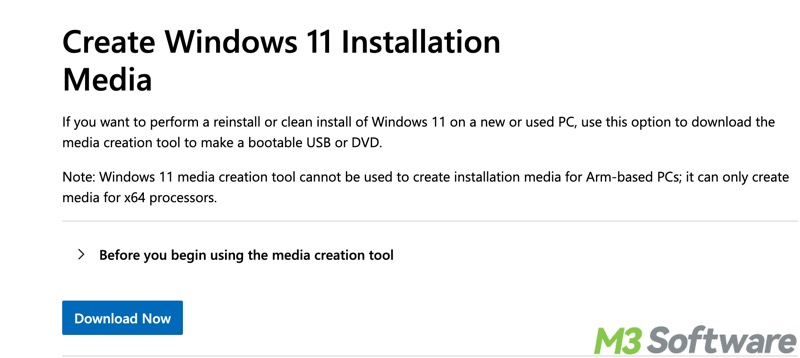
When we double-clicked the MediaCreationTool.exe, it started to run immediately but closed abruptly in just a few seconds. The media creation tool icon, meanwhile, directly disappeared from the Taskbar. We tried several times, but the results were always the same.
Many professionals and geeks are inclined to believe that it is a mistake made by Microsoft, and things are expected to revert to normal in a few days.
If you still need a Clean Install of Windows 11, you can create a Windows 11 bootable USB through Rufus. Alternatively, download and use Windows 11 Installation Assistant, which is a Microsoft tool that helps upgrade a Windows 10 PC to Windows 11 smoothly. 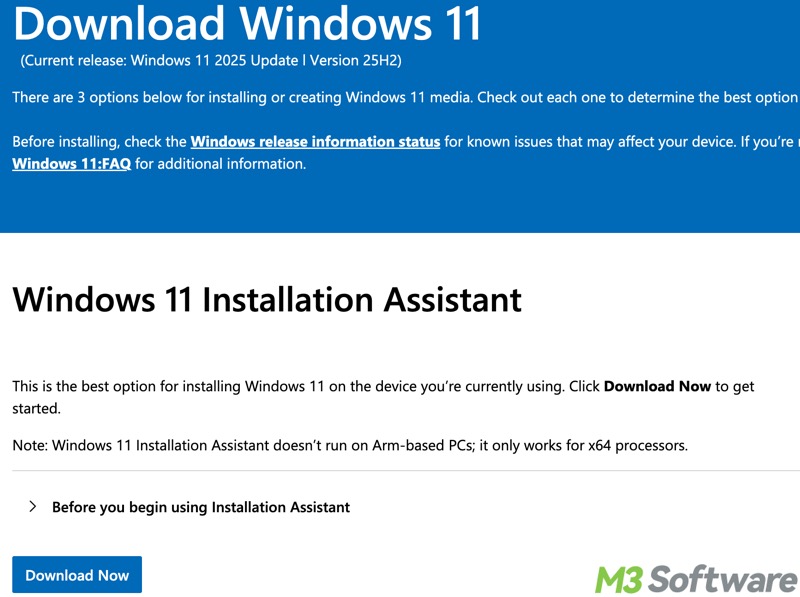
The third workaround is to directly download Windows 11 ISO from the Windows 11 software download center and follow the steps below:
- Download Windows 11 ISO from the Windows 11 software download page.
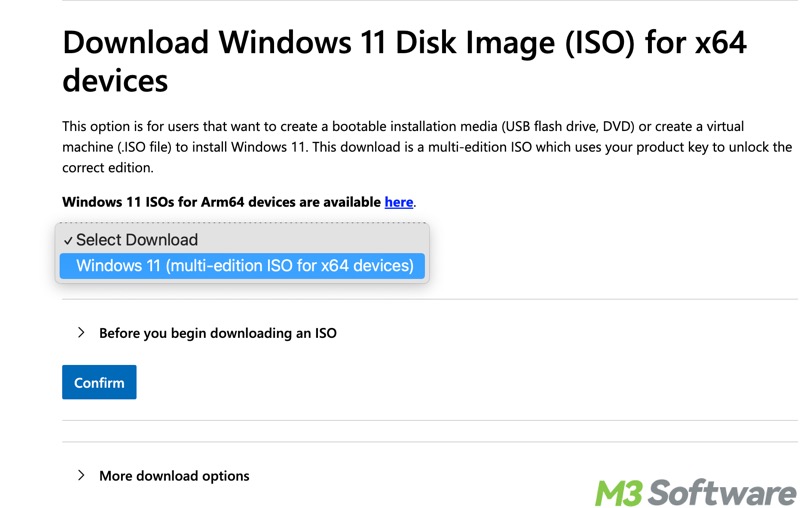
- Right-click on the Windows ISO and select "Mount."
- Open the new virtual drive that appears.
- Run setup.exe.
- Choose “Not right now” when asked to check for updates.
- Select “Custom: Install Windows only (advanced)”.
How to safely keep Windows 10 after Windows 10 support ends
If you're currently unwilling to upgrade to Windows 11 or your PC does not meet the system requirements to run on Windows 11, enroll your device in the Windows 10 Extended Security Updates for one more year, which is the best and most secure way to keep using Windows 10 securely after Windows 10 end of support.
Here's how:
- Open "Settings" > "Update & Security."
- Tap on the "Enroll now" button.
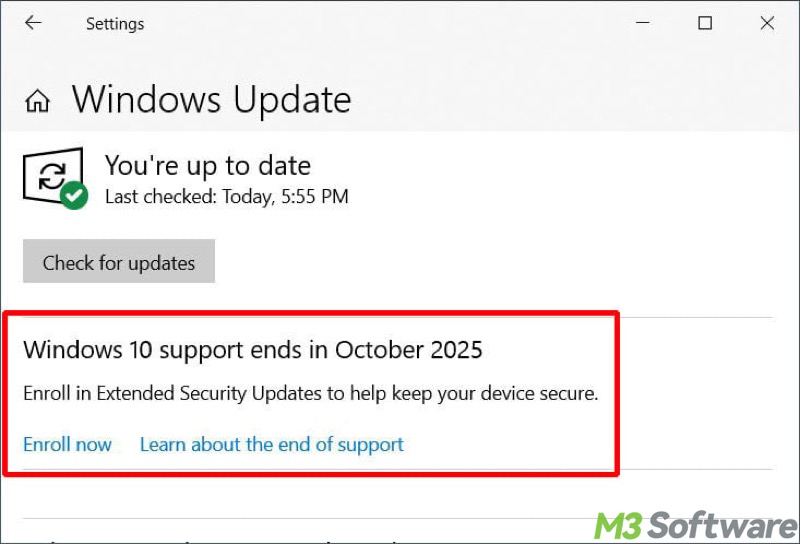
- Click the "Next" button when the enrollment window pops up.
- You'll be provided with 3 options for enrollment: "Back up your PC settings", "Redeem Microsoft Rewards points", and "One-time purchase." Select one and click "Next."
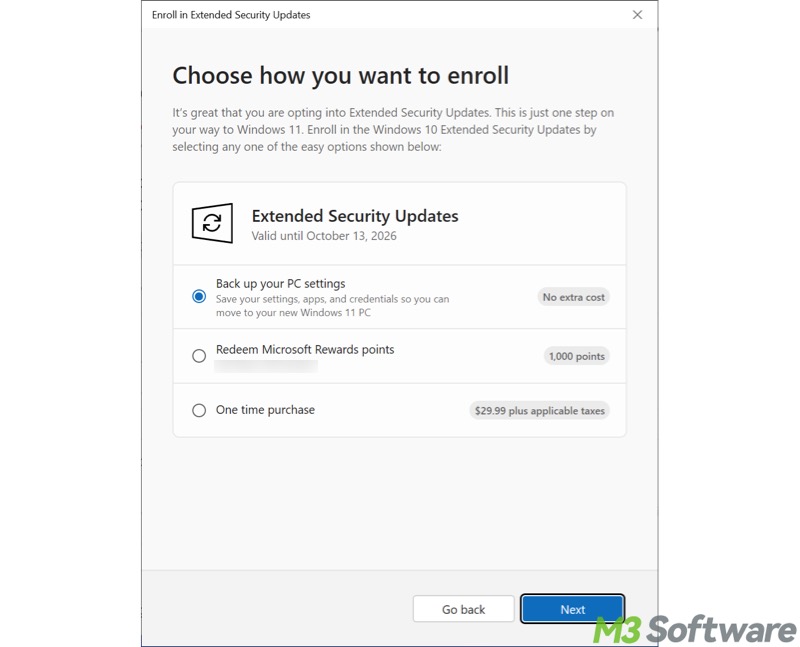
- Confirm and click the "Enroll" button.
- Tap on "Done."
You may also be interested in Windows 10 ISO download
What do you make of this article? Please share it with your friends if you find it helpful!
FAQs about Windows 10 support ends
When Windows 10 support ends on October 14, 2025. At this point, technical assistance, feature updates, and security updates will no longer be provided. Your Windows 10 PC may be exposed to attacks, malware, or various risk.
Surprisingly, Windows 10 users can keep using Windows safely by manually enrolling devices in the Extended Security Updates from Microsoft. To enroll, you need to: 1. Open Settings and select Update and Security. 2. Tap on the Enroll now button. 3. Click Next. 4. Select an option for enrollment and click Next. 5. Tap on the Enroll button.
Yes, you can upgrade Windows 10 to 11 if your devices meet the minimum system requirements and are running the latest Windows 10 version. You can check for availability via Windows Update or use the Windows 11 Installation Assistant for a direct download.
